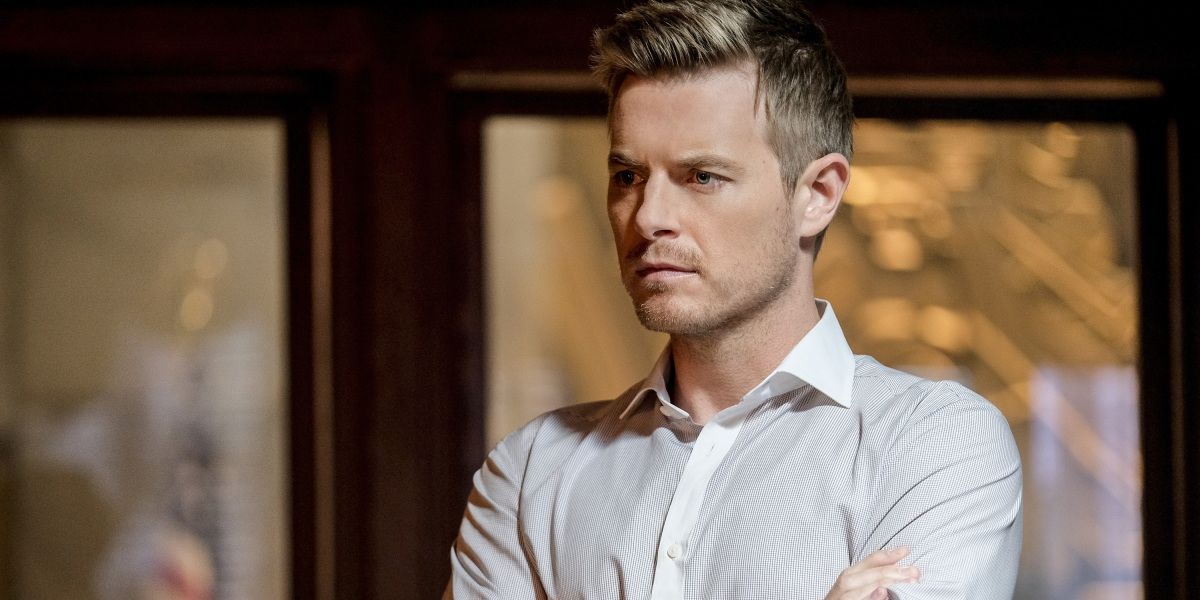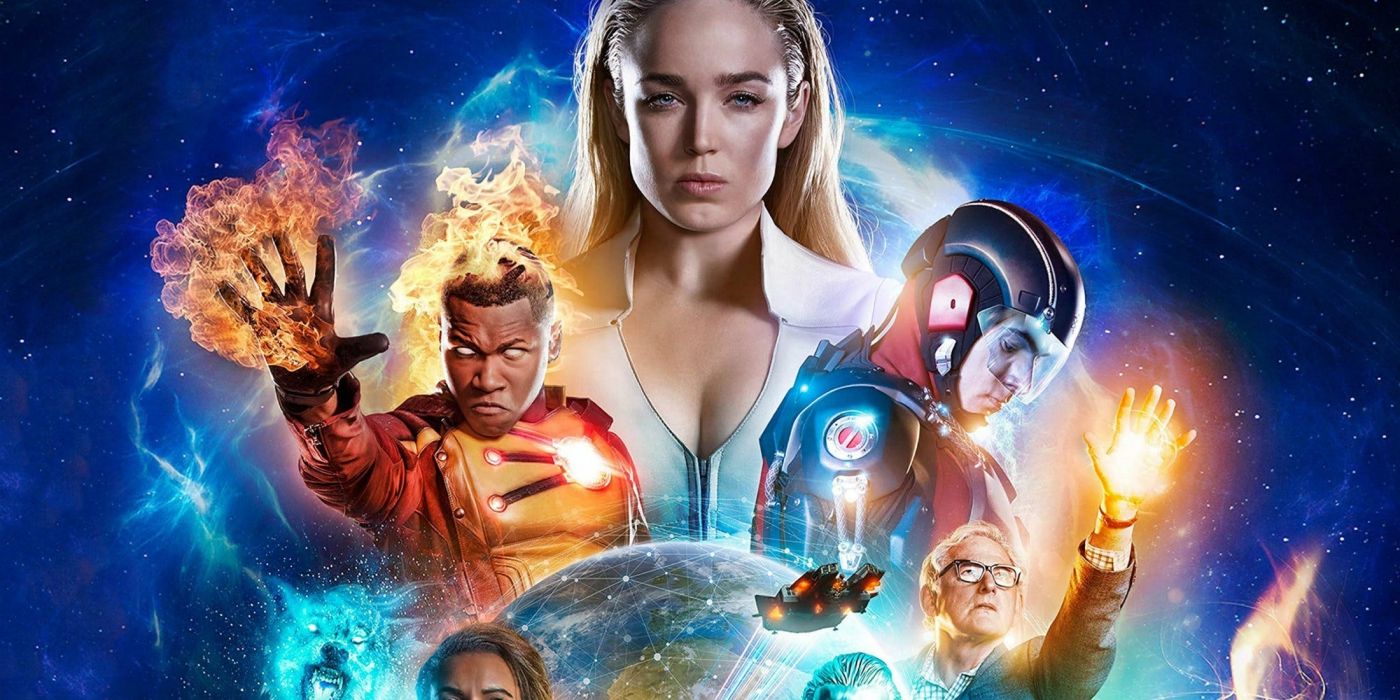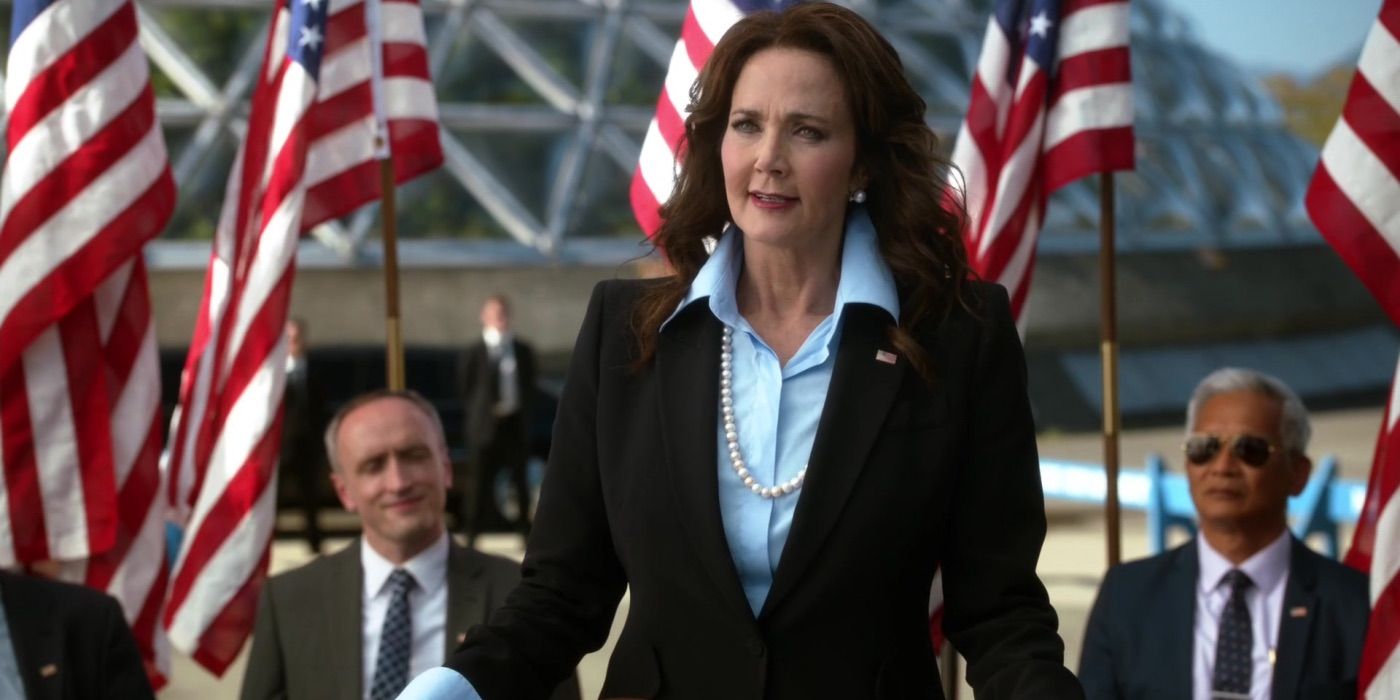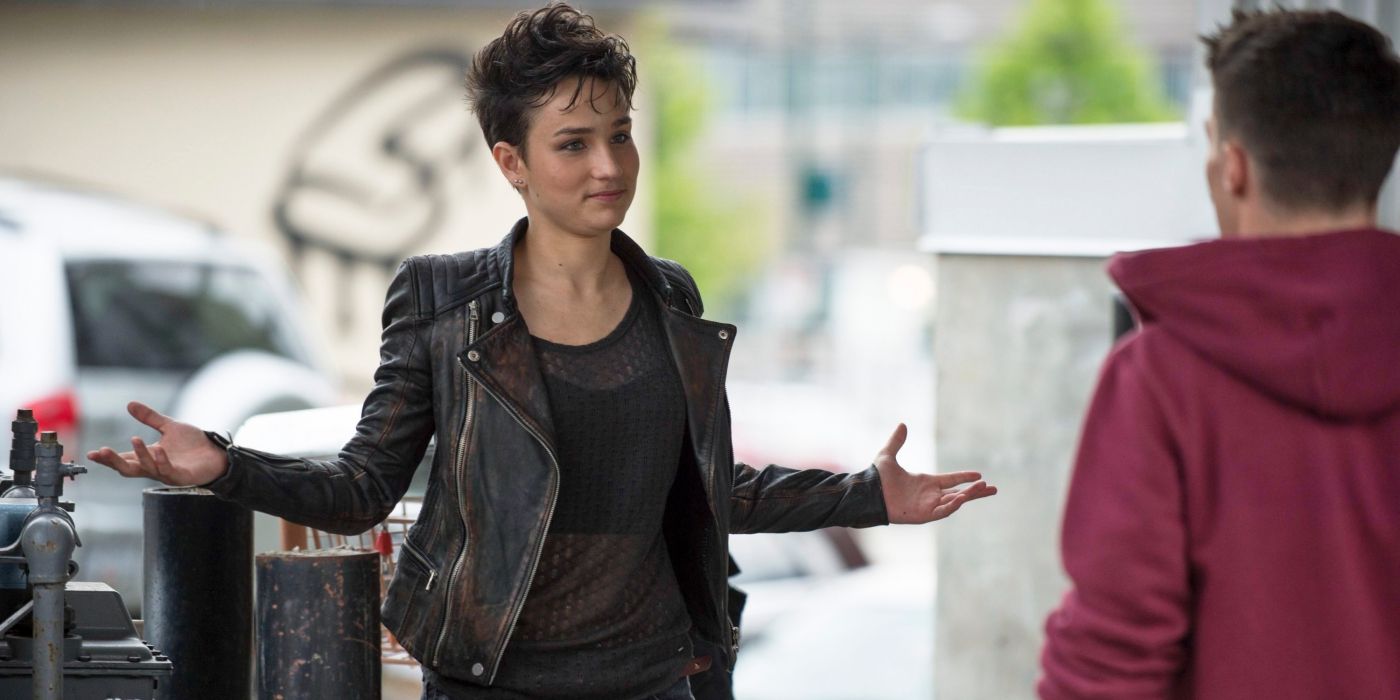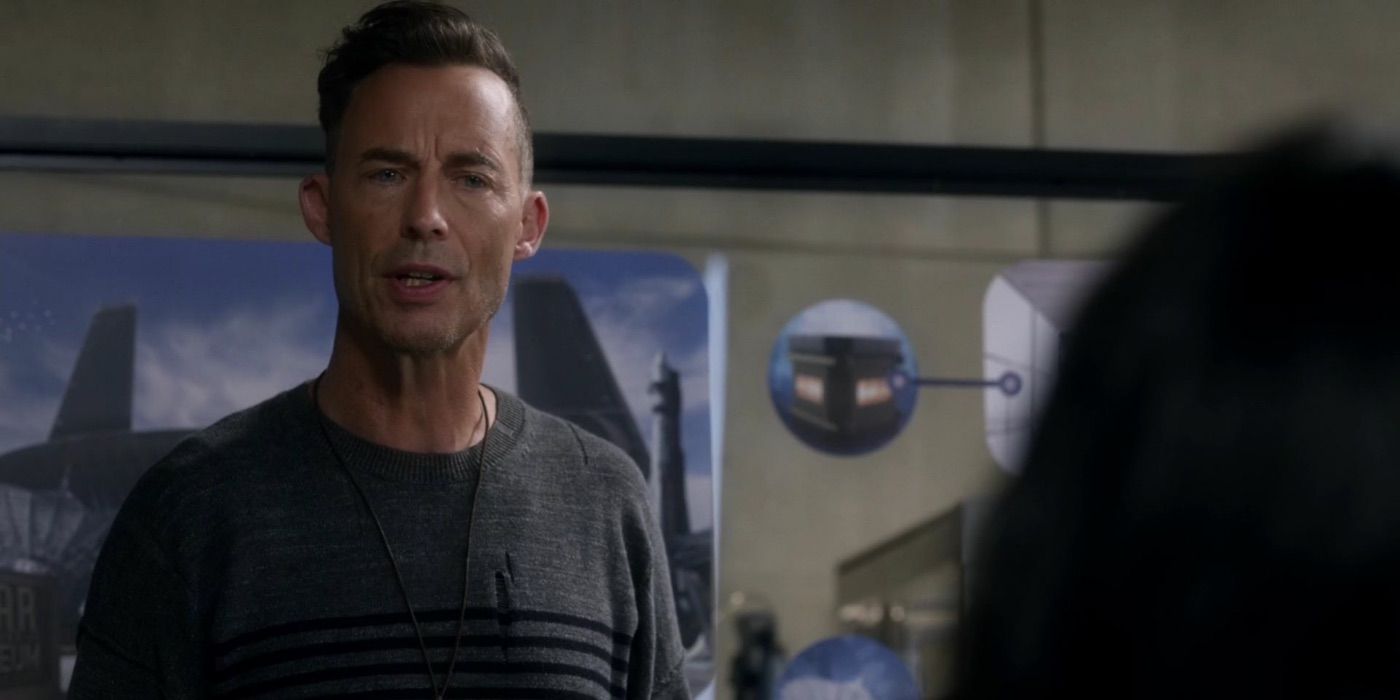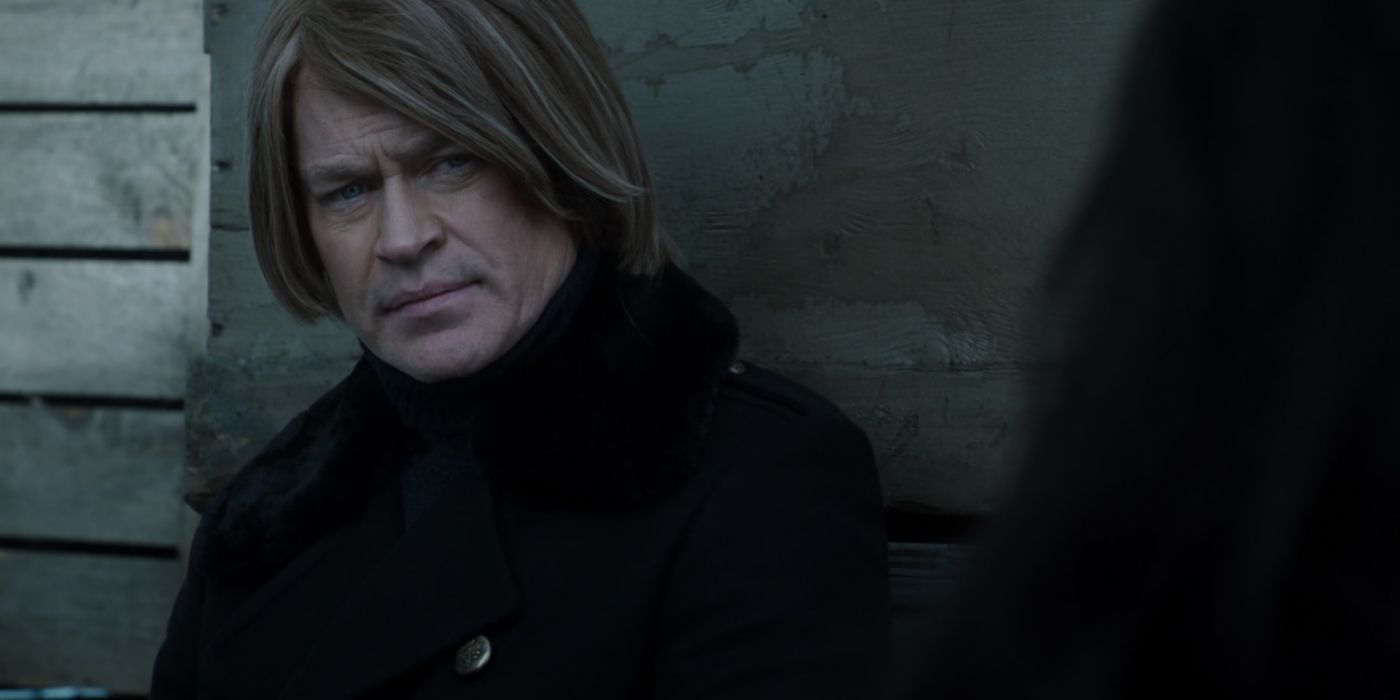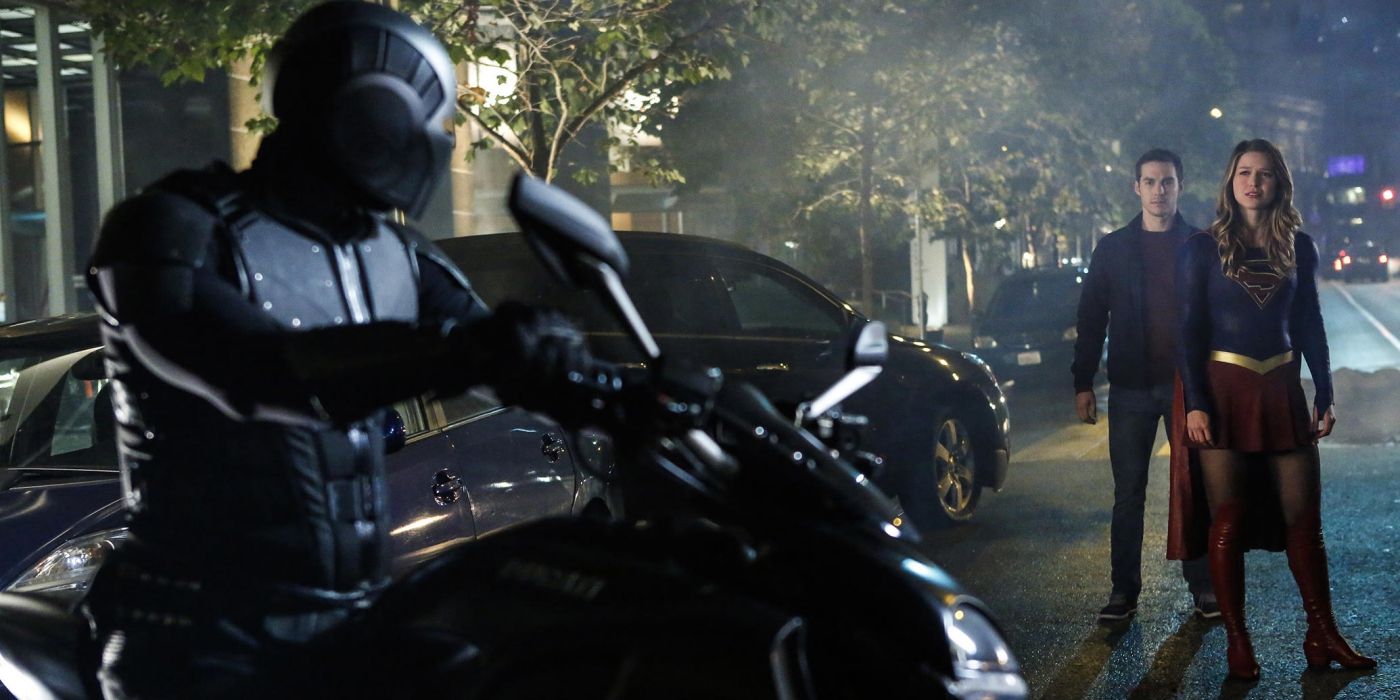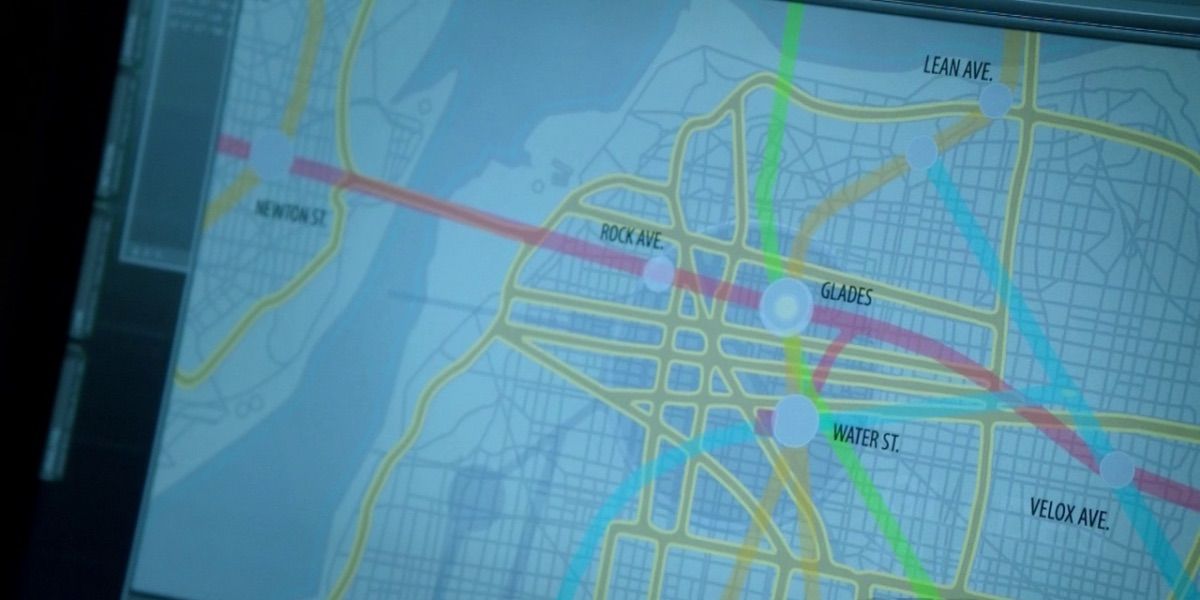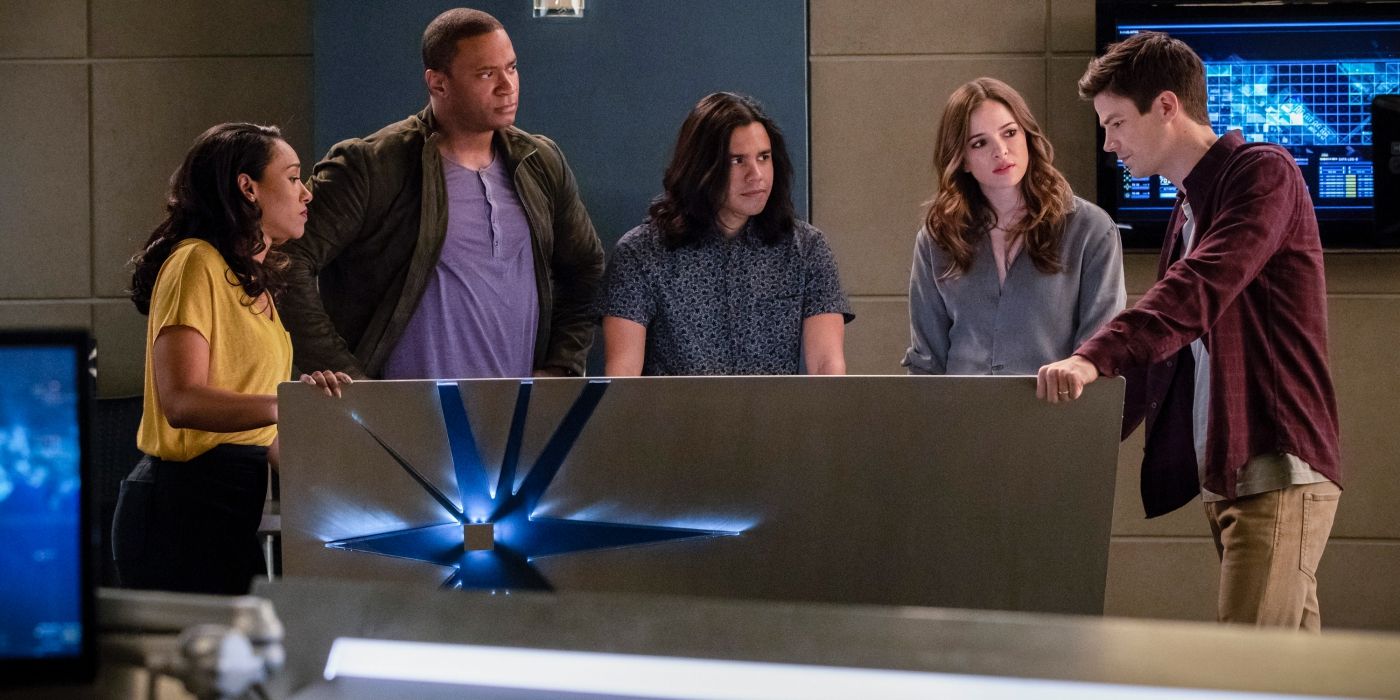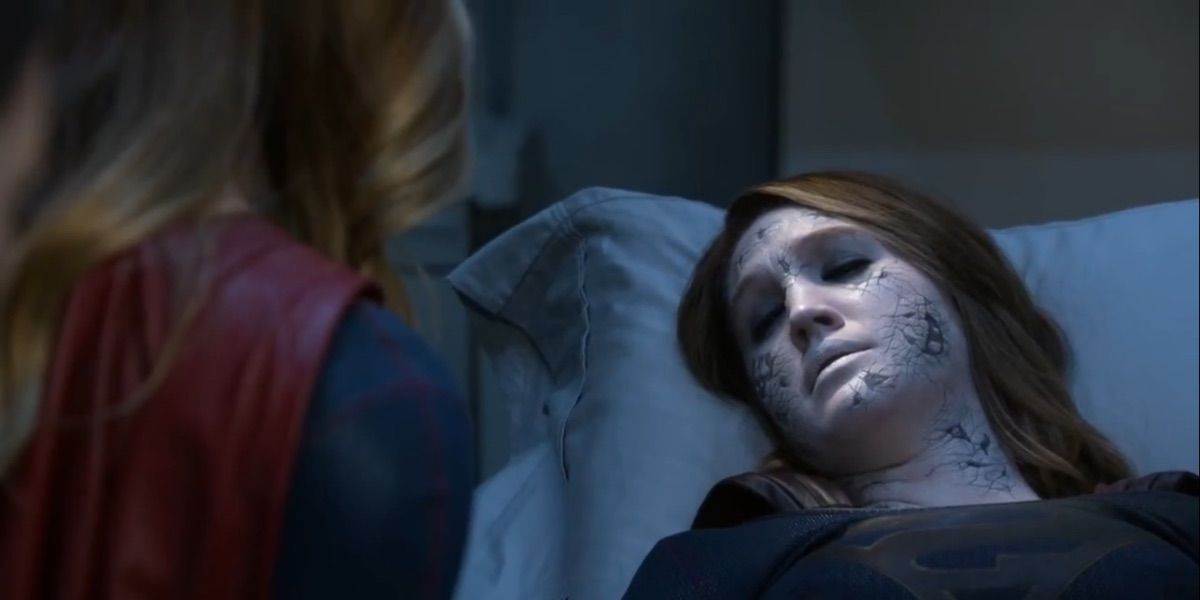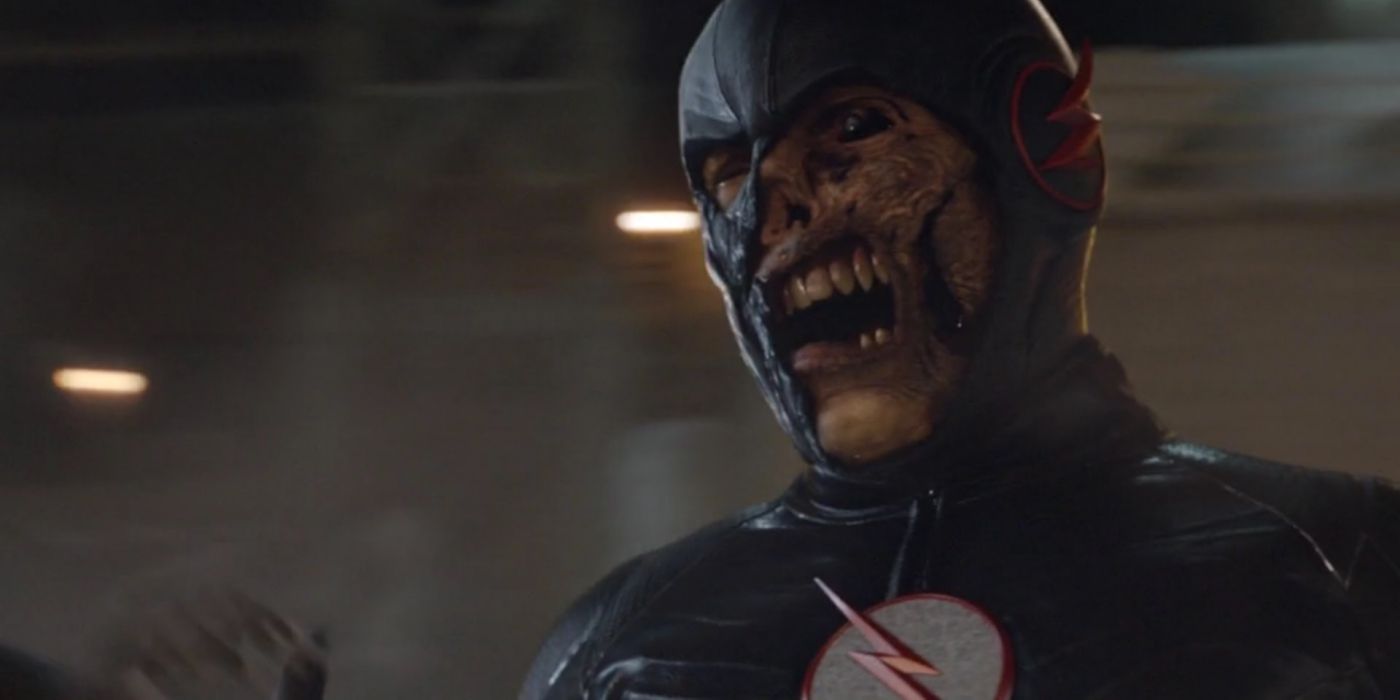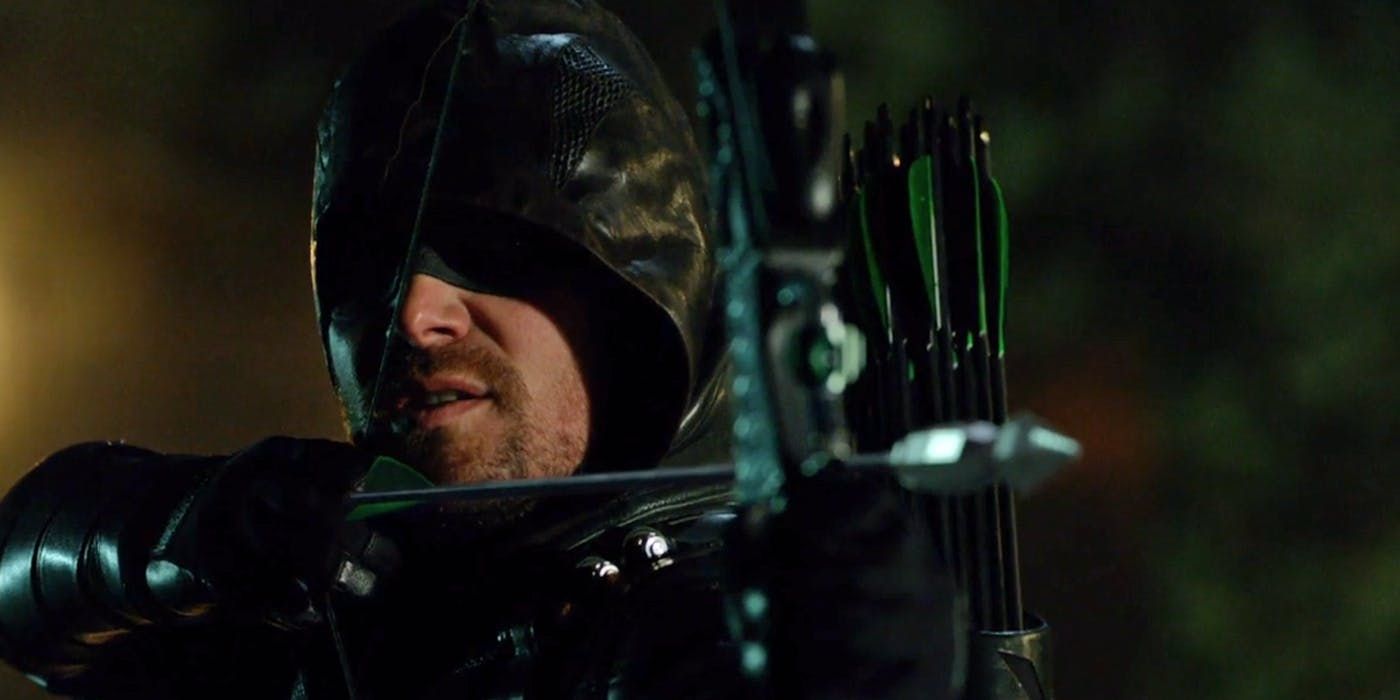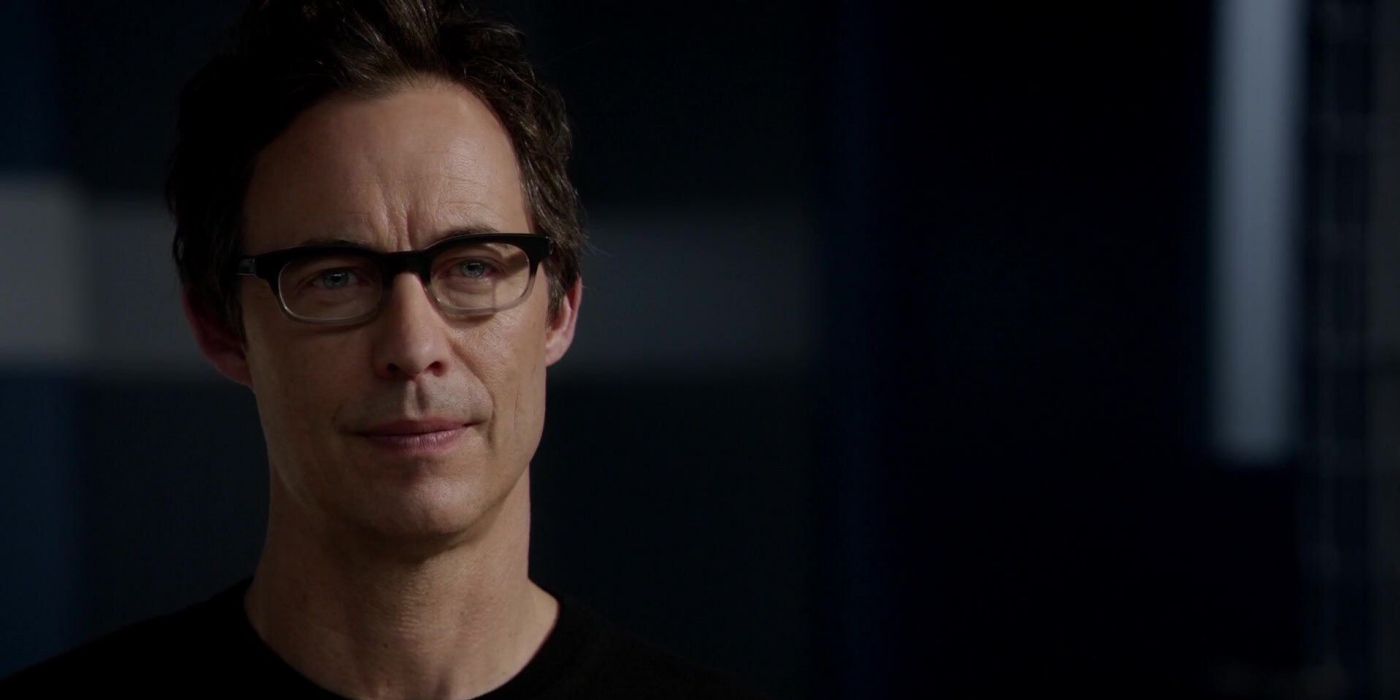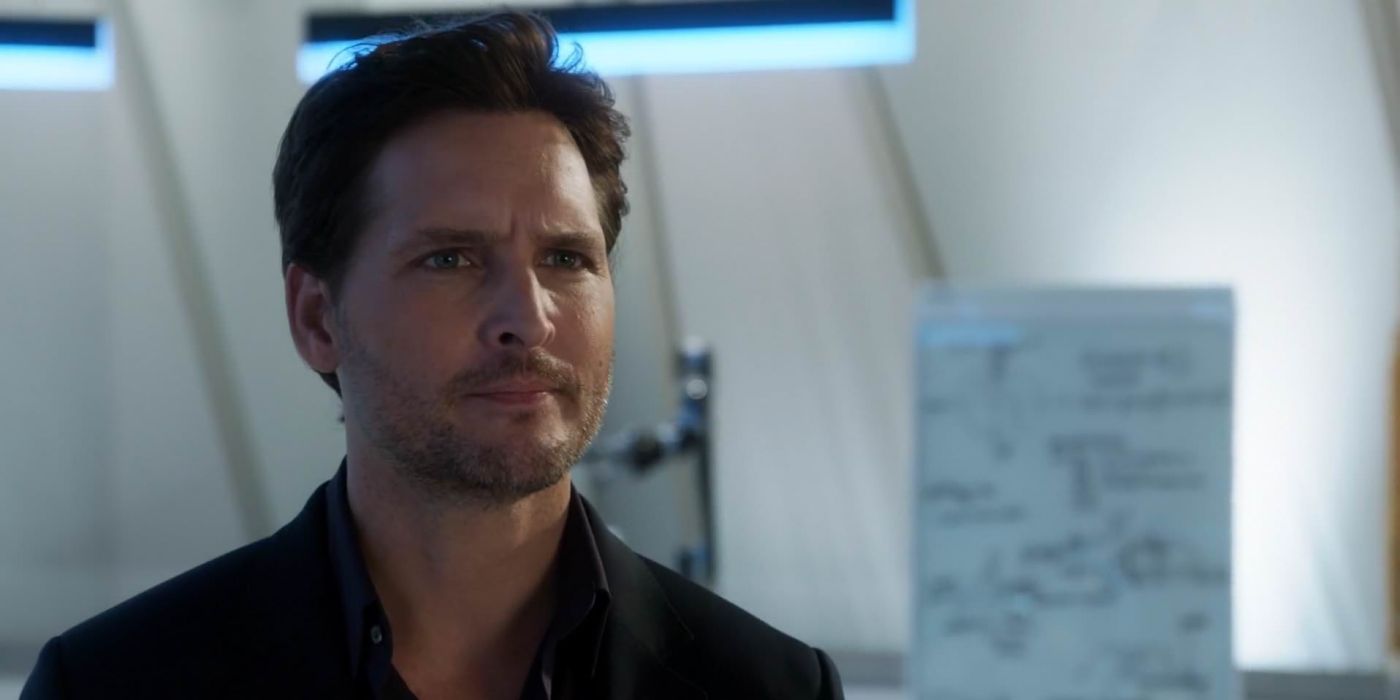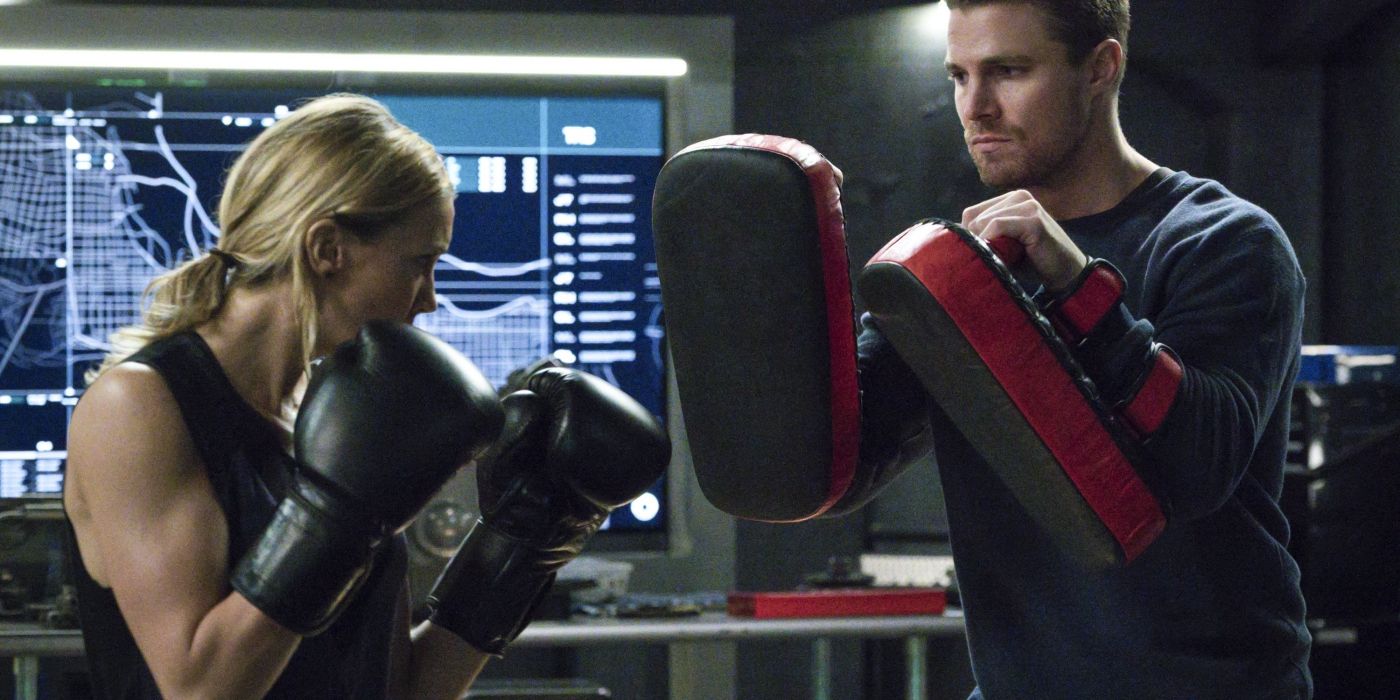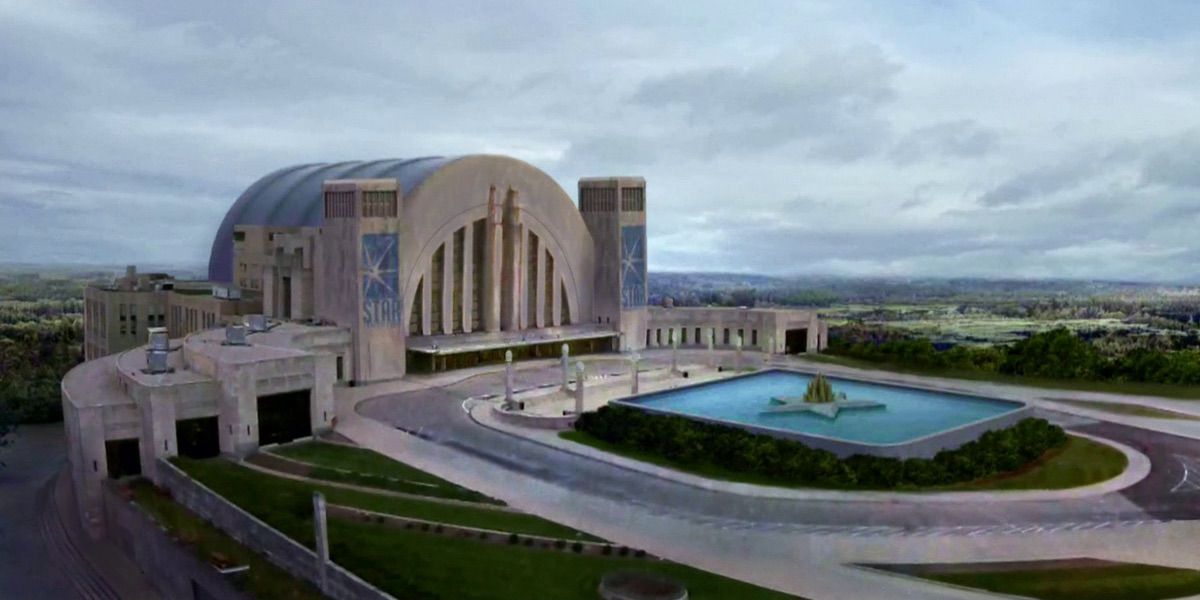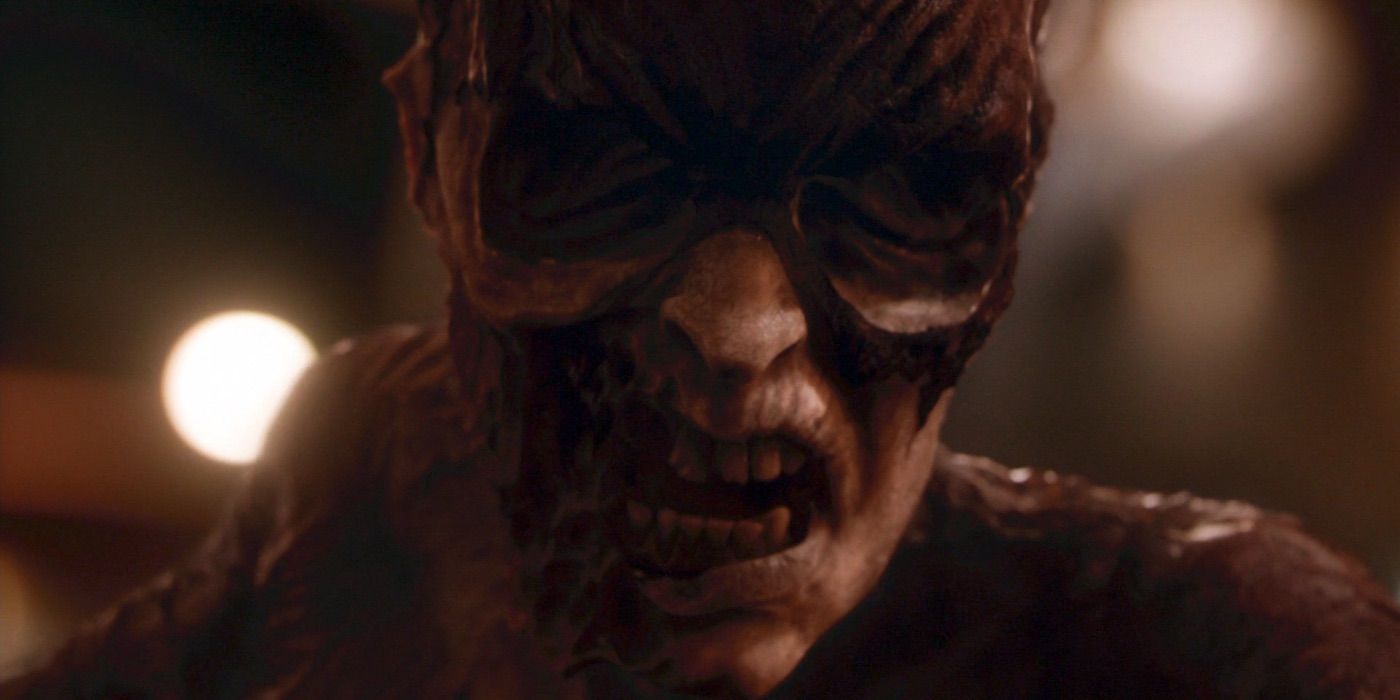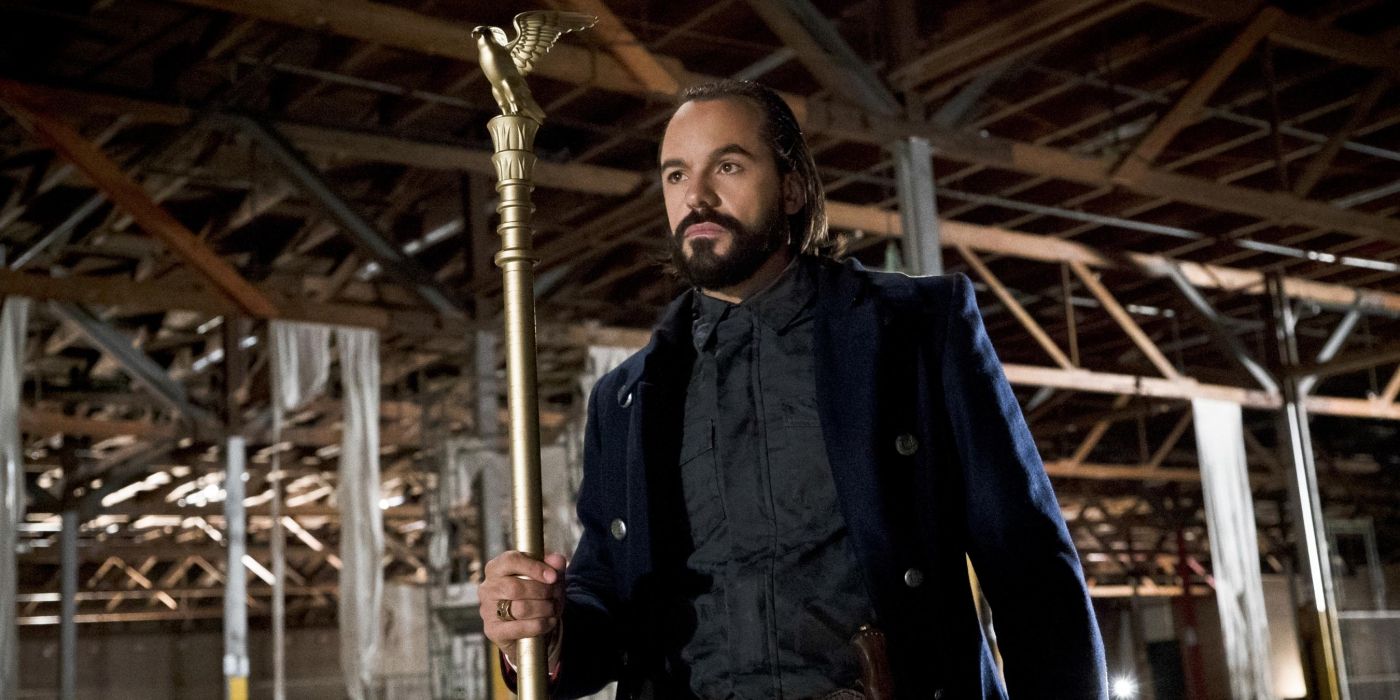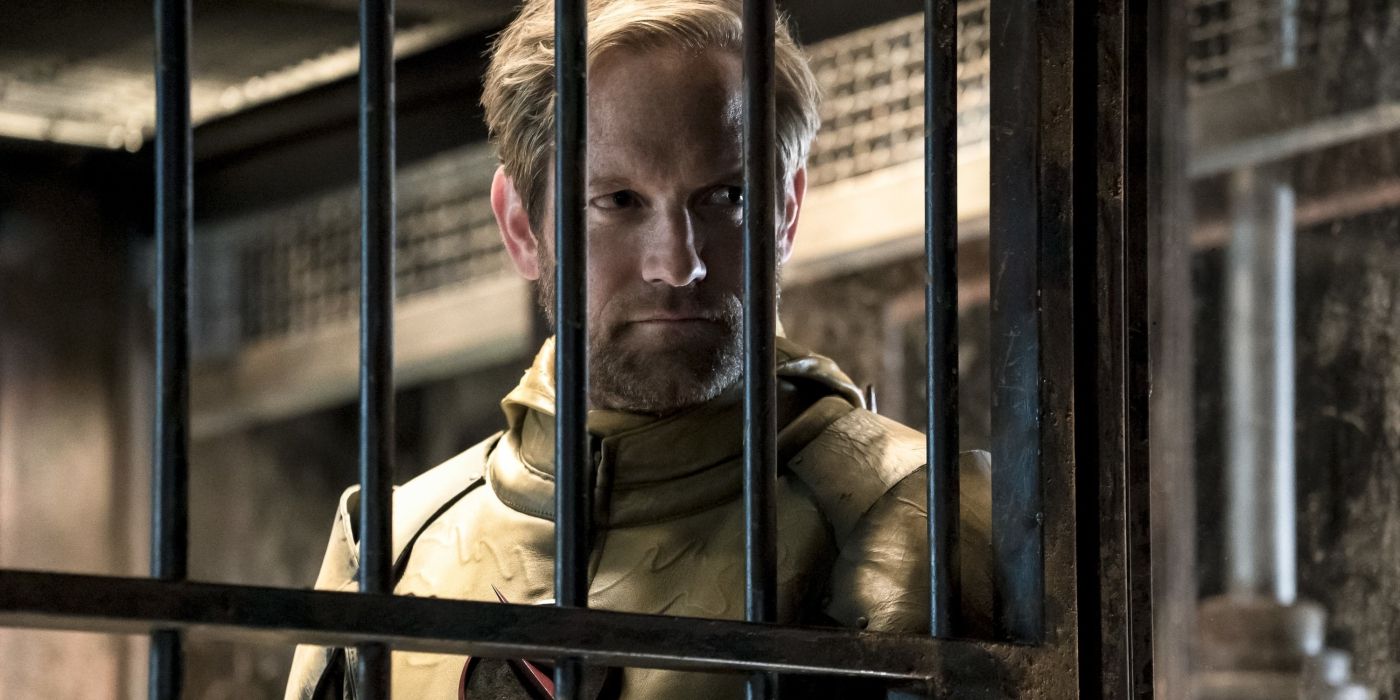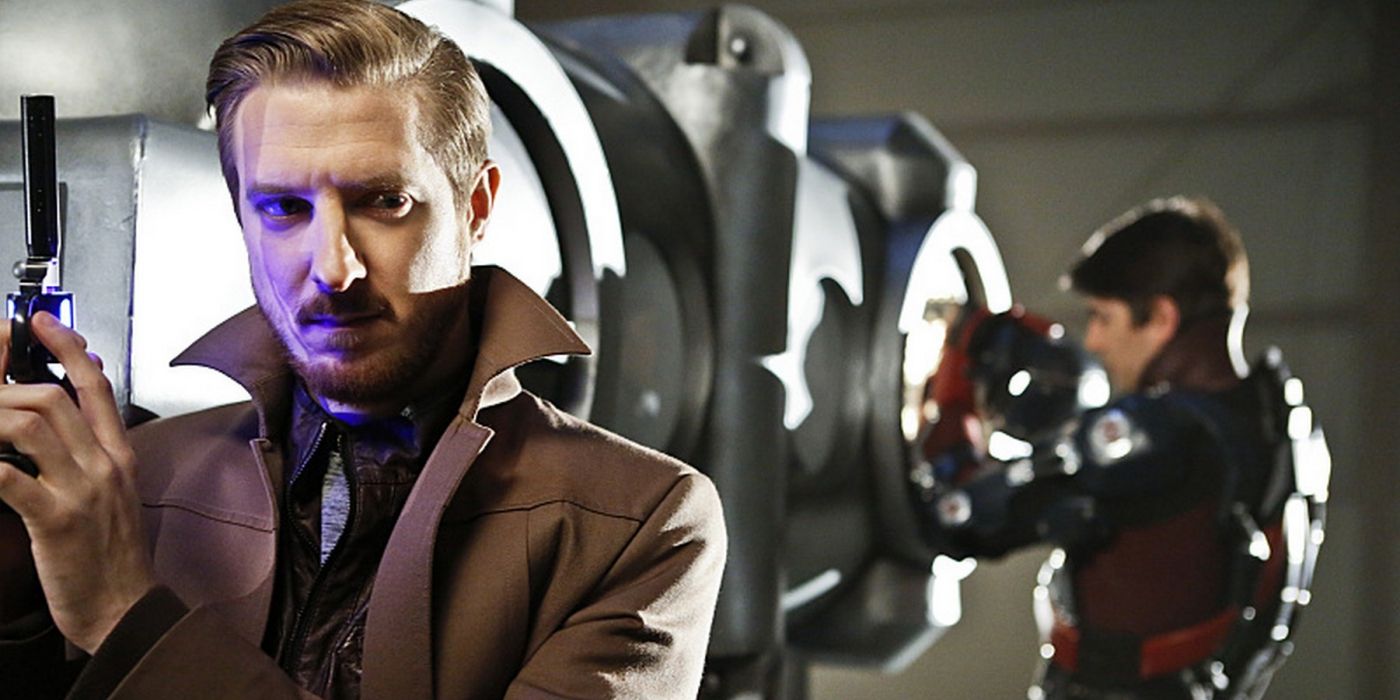For six years, the Arrowverse has explored myriad narratives, both large and small in scope. Arrow led the charge for two season before The Flash debuted, later followed by Supergirl and Legends of Tomorrow. With 16 seasons of television, when solely considering the live-action series, the Arrowverse has undeniably achieved a hallmark in serialized storytelling. This is especially worthy of note given the way in which these stories and characters are often interwoven with crossovers and references. The CW’s expansive superhero franchise is by no means perfect. However, its success is nothing to scoff at; most art bears some semblance of a blemish.
In the Arrowverse’s case, as with any other piece of storytelling media, blemishes manifest in plot holes. Such errors, regardless of significance, beget inconsistencies in otherwise well-executed narratives. These plot holes are bound to lead to blanks being left in a story’s progression. Or they can raise questions with regards to a character’s past, their present motives, or stated future plans. Arrow, The Flash, Supergirl, and Legends of Tomorrow are guilty of all of the above and more. The following list will recall several of the aforementioned instances. Here are 20 plot holes that the Arrowverse has yet to repair.
20 EDDIE'S SACRIFICE IS MEANINGLESS
Eddie Thawne spends the last few episodes of The Flash’s first season doubting himself and his place in the world. This stems from a conversation with his descendant Eobard/Reverse-Flash, wherein the latter tells Eddie of his life’s insignificance. Outside of his police work, which is also menial in the grand scheme of things, Eddie accomplishes nothing of note. In fact, according to Eobard, Eddie will not even marry the love of his life, Iris West. Rather, the detective settles for an average existence, one that future generations in the Thawne line won’t recall with fondness. It’s a distressing revelation -- Eddie’s response, calling off his and Iris’ engagement, is also heartbreaking.
All of the above aids in accentuating Eddie Thawne’s sacrifice. He kills himself to ensure that the Thawnes won’t live on, to ensure the villainous Eobard Thawne never exists. Eddie’s sacrifice is meaningless, then, as Reverse-Flash continuously returns, each time causing harm and destruction. Thus, Eddie’s efforts combined with Eobard’s continued existence only proves one thing -- that Eddies is indeed just as insignificant as Eobard claims. Logically, though, Eobard’s reappearances still incite confusion. As a descendant of the detective, he should be entirely wiped from the timeline. But, of course, time travel and Speed Force logic, as well as popularity, ensure he’s never gone for long.
19 LEGENDS AREN'T PUNISHED FOR ANACHRONISMS
Are the Legends held accountable for their often disastrous actions? Sure, to a certain extent. Rip Hunter rarely fails when an opportunity provides him a chance to admonish their reckless behavior. By the start of season three, the Waverider is revoked and they are all sent back to the modern timeline, forced to live normally. Rip even founds an agency, the Time Bureau, to essentially do the jobs the Legends had initially been assigned. Upon the team’s being given another chance to prove themselves, no one is harder on them than the Time Bureau’s Ava Sharpe. However, the consequences for their mistakes seem rather tame when considering how similar mishaps are handled when Speedsters are involved.
There’s no Black Flash or Time Wraiths to keep the Legends in check. Stein’s time traveling ventures result in his returning to the present to find a child he didn’t have before his departure. If she’s as brilliant as everyone says, certainly more than his own personal timeline has changed. Might she have created a marvel in science akin to her father’s F.I.R.E.S.T.O.R.M Matrix? We can’t be sure, but it’s odd that there are no residual effects. It’s odd that the Legends’ key form of punishment comes in the shape of a disrupted timeline that they are tasked with fixing.
18 BUILDING A WALL UNDER PRESIDENT MARSDIN
Lynda Carter’s President Marsdin debuts in Supergirl’s sophomore season. From the start, she’s established as a progressive-leaning POTUS, one who likely ran as a Democrat. Marsdin wants to enact alien rights laws that welcome them to America and offer opportunities. Eventually, it’s revealed that this may be due to her being an alien herself. This premise is interesting, for sure. However, season three seems to walk back some of her noted beliefs. When Maggie Sawyer’s father arrives in National City, he tells his daughter that her being gay complicates their already complicated lives.
As Mexicans, they’re fighting a system that’s building a wall to keep them out. Why would Maggie want to face homophobia in addition to racism? The point he makes, while troublesome, is somewhat salient. Yet, are we to believe that President Marsdin is closing borders for an ethnic group escaping poverty and untold horrors to then let alien immigrants roam free? There’s likely an explanation for it. Perhaps Marsdin, as a Democrat, inherited a Republican House and Senate, a government that was already making moves to close America’s borders. This could explain why some aliens early in season two act resentful towards her efforts. Should this be the case, we hope Lynda Carter returns, permitting the show a chance to expand upon this further.
17 WHERE'S SIN?
Sin arrives in Arrow season two and is established as a friend of Sara and Roy. As the season goes on, she also develops a friendship with Thea. Sin appears every so often, acting as a little sister to Sara and a confidant to Roy in his dealings with the Arrow. The character never receives expansion beyond these few relationships. Therefore, it is no surprise that she’s written out of the show when Sara dies and Roy departs in season three. She would not have served much of a purpose.
However, her being so closely tied to these two makes it difficult to understand why she’s not even mentioned by them. Sara calls her a baby sister, after having promised Sin’s father (during Lian Yu flashbacks) that she would protect his daughter. When Sara returns from the dead, she doesn’t even inquire about the young woman. Of course, this could be because of her having died and undergone resurrection via Lazarus Pit. But does Sin never hear of Sara’s return? Does Roy never seek out the woman who used to be his sole friend? It’s odd, to say the least. Inevitably, the actress, Bex Taylor-Klaus’ commitment to MTV’s Scream, explains some of these troubles. Just a mere mention of Sin’s name and whereabouts would alleviate the problems specific to her absence, though.
16 S.T.A.R LABS MUSEUM
The Flash season three’s HR Wells works hard to garner Team Flash’s trust. The Earth-19 native is repeatedly caught in lies and brings little value to the team, from an intellectual standpoint. What he does have, however, is heart. Despite his fibbing and half-truths, he actually cares about the team and their well-being. Thus, he makes it his priority to please them and enhance their quality of life. One grand gesture includes the S.T.A.R Labs Museum.
The museum isn’t meant solely to appease Team Flash. It’s also supposed to begin rebuilding Central City’s trust in the laboratory that once failed them. HR’s plan is genius. Unfortunately, Barry and the others are skeptical. Upon HR’s finishing the project, the museum opens with little fanfare. The few Central City citizens that do attend the opening seem to enjoy themselves. Even Barry commends HR’s hard work, encouraging their new friend not to give up. Eventually, giving up is apparently the only option. Beyond season three, the museum never garners further mention. It’s a shame, as it would offer Team Flash a way in which to honor HR’s life. Furthermore, a S.T.A.R Labs museum acts as the perfect primer for The Flash museum.
15 DAMIEN DARHK ISN'T ALLOWED TO MEET HIS PAST SELF
As Legends of Tomorrow’s third season winds to a close, the Legends must save Ray from Damien and Nora Darhk. The scientist finds himself in this predicament because they need to harness the power of Amaya’s totem. Ray quickly discerns that the sole option is to find the right power source. Power of the required magnitude can only be derived from two places -- the Big Bang and cold fusion, the latter of which does not exist. According to Damien, however, cold fusion is real. His knowledge of the world-changing marvel comes from his being hired to assassinate the scientist who invented in it 1962.
Obviously, the madman decides to go back in time and stop himself from killing the cold fusion inventor. There’s one issue, though. Nora claims that meeting his former self could adversely affect his present day or future timeline. Is this true? Sure. But is it so true that Ray and Nora should be trusted to take on this inherently dangerous objective? Absolutely not. Martin Stein interacts with his past self several times. The first half of season three features many of the Legends meeting their younger counterparts. It’s fun to watch Damien get left behind on a mission. However, seeing present day Damien Darhk spend an episode battling himself in his prime may have made “No Country for Old Dads” all the more exciting.
14 SUPERGIRL'S DISMISSAL OF GUARDIAN'S HEROISM
James Olsen’s Guardian mantle may be divisive amongst fans, but one consensus seems to have been reached: Supergirl’s criticism of the vigilante is harsh. When James first adopts the mantle in season two, Kara, unaware of her friend in the suit, immediately distrusts him. She clearly doesn’t like his brand of vigilantism (enter Supergirl’s first legitimate Batman reference). However, the hero tolerates the masked man, as she realizes that his intentions are good. Once she discovers that it’s James under Guardian’s disguise, her toleration turns sour. According to the Girl of Steel, James can’t be a hero. Her key point of contention? He’s a human.
On some level, this makes sense, especially since she is primarily concerned for her friend’s safety. Yet, her human argument is antithetical to her behavior. For one, she works closely with her sister, Alex, a DEO agent who’s every bit as willing to take the risks superpowered folks take. Interestingly, her disdain for James’ nightly ventures debuts episodes after she works alongside the Green Arrow, White Canary, and several other regular people in the “Invasion!” crossover. Simply put, Supergirl repeatedly contradicts herself. It’s made even worse by their friendship turning cold during much of the second season’s back half. Here’s to hoping steps are eventually taken to alleviate some of the tension that still permeates Supergirl and Guardian interactions.
13 AN EXPLOSION IN THE GLADES
The poorer areas of Star City, the Glades, have had a tough go of it during Arrow’s six seasons. Malcolm Merlyn uses an earthquake machine to destroy much of the area in season one. His actions deal a massive blow to the community; 503 lives are lost. In season two, Jason Blood under false pretenses, works with Oliver to restore the Glades. Ultimately, his attempts are unsuccessful. The Glades are not granted the spotlight again until season four, when Damien Darhk’s H.I.V.E deals the area another massive blow that results in senseless destruction. If the Glades are repaired following this event, the show doesn’t broach the subject.
Towards the end of season six is where this entry comes into play. During “The Dragon,” Felicity sees a news report detailing Green Arrow’s recent activity in the Glades. An explosion levels an entire block in the area and no survivors are reported to have been found. Green Arrow escapes by grappling, but it seems no one else is as lucky. This raises many questions. What happened? How much of the Glades is still intact? Will actions be taken to assist this continuously struggling community? Precedent says none of the above will receive answers.
12 HOW DOES TEAM FLASH MAKE A LIVING?
Everyone on Team Arrow, barring Diggle since he lives off of Lyla, has other means of maintaining financial stability. The same can be said of Supergirl’s main cast of characters. Presumably, the Legends don’t have to worry about income. Living on a timeship affords them endless possibilities with regards to monetary concerns. Team Flash is a different case, though, particularly when considering Caitlin and Cisco. Joe’s a detective and Barry has his inheritance from season one Harrison Wells and his former job in forensics. It seems Iris may depend on Barry financially, even if her new blog garners her some revenue. But, seriously, what about Caitlin and Cisco? What about Harry and HR when they’re around?
It’s possible that Barry provides them a salary from whatever he has left of Wells' trust. Yet, that does not seem feasible. Sure, S.T.A.R. Labs has money, but the business hasn’t been profitable since before the show began. This likely explains why Barry’s yet to make an effort to restore the building’s exterior. Eventually, his savings are bound to run out as several people and a fully functioning laboratory are reliant on one source for sustainability. Such an issue isn’t as glaring as some others on this list. However, a throwaway explanation, akin to Felicity’s and Curtis’ questioning Diggle’s livelihood, could offer an easy fix.
11 BIZARRO'S FATE
Supergirl’s pilot season features the fascinating debut of Bizarro. The Maxwell Lord creation, despite having inherently good intentions, wreaks havoc across National City. By the end of “Bizarro,” Supergirl and the DEO team are able to subdue Bizarro Supergirl. Unfortunately, this means she is subjected to an induced coma. Supergirl does offer the troubled Jane Doe hope, promising she won’t be alone whenever she wakes up. This last thought is what eases Bizarro into her indefinite sleep. After she’s under, J’onn agrees that the DEO will do all they can to treat her.
It’s a nice sentiment, one that has yet to receive further exploration since season one. Presumably, the DEO still has her locked away somewhere. Who knows if she’s being well tended to and whether someone is actively working on a solution? Furthermore, we’re left wondering if she will ever be revived. Is Bizarro another season one element that’s been cast aside since the show’s move from CBS to The CW? Hopefully, this is not the case as there is still much to the character worth seeing translated to the Arrowverse. One needs to look no further than Superman: The Animated Series and Smallville to see proof of Bizarro done right. Supergirl’s already established an incredible foundation for the character. Let’s hope Bizarro is not abandoned for long.
10 BLACK FLASH NEVER ATTACKS BARRY
Since his inception at the end of The Flash’s second run, Black Flash has hunted Speedsters who commit the most egregious crimes against time. His most notable target is the Reverse-Flash, who appears squeamish at the mere mention of Black Flash’s name. Additionally, The Flash’s third season finale sees the Speed Force enforcer rid the team of their Savitar problem. Black Flash having these two in his crosshairs makes perfect sense. Both have traveled back in time to inflict harm on Barry, specifically. One is responsible for the murder of the Scarlet Speedster’s mother. Meanwhile, the other tries to kill Iris.
Barry hasn’t been noble in the way he’s used his powers, either. The hero is known to behave selfishly from time to time. "Flashpoint" is a devastating event that incited the Dominators’ invasion of Earth. Furthermore, "Flashpoint" also alters the lives of Diggle, Cisco, and Caitlin. Are these events not enough to warrant the Black Flash’s attention? Evidently not. And, honestly, that’s fine. The problem presents itself in that there is no clear cut answer. Maybe Black Flash only targets those who harm Barry, the reason for the Speed Force’s very existence. Barry’s immunity to the Black Flash’s ire would not be an issue if it were explained.
9 KRYPTONITE ARROWS AND RED SUNS
The Arrowverse’s “Crisis on Earth-X” is an achievement worthy of more praise than it receives. Heart, humor, action, and a good time all work together to make for an unparalleled television event. It’s near perfect from start to finish; however, there exists one or two glaring issues. For one, how does Oliver Queen gain access to Kryptonite? In fact, how does he even know about Kryptonite? And how does Barry Allen know that a Red Sun can weaken Supergirl? According to Harry, there are 53 Karas across 53 Earths. Interestingly, there’s never been a single mention of Earth-1’s Supergirl.
Kara surely is not close enough with Oliver to have shared the details concerning her powers. Perhaps audiences are to believe she told Barry this information and the Speedster passed it on. It’s possible, but this hypothesis fails to explain where Oliver gets Kryptonite in case of an evil Supergirl situation. Other, more pertinent questions are also raised. Does Oliver know the whereabouts of Earth-1’s Supergirl? Of course, any one of these inquiries could be answered by simply inserting Harry Wells or A.R.G.U.S. into the narrative. Hopefully, fans won’t have to wait to long to have this plot hole filled.
8 HAS CENTRAL CITY FORGOTTEN HARRISON WELLS?
The Harrison Wells from Flash’s first season confesses to the murder of Nora Allen. Therefore, wearing his face in public is not ideal. Harry gets away with it in season two by spending most of his time in S.T.A.R. Labs. Season three’s HR, however, chooses to be the face of the laboratory’s new museum. Once Caitlin and Cisco inform HR of the trouble he would run into, the Earth-19 Wells quickly devises a solution. On his Earth, there’s a “facial transmogrification” device that allows a user to wear the identity of another. HR’s partner, Randolf Morgan, is his chosen identity.
The technology and its usage can be described as nothing short of genius. Plus, it makes for a compelling story conceit. Yet, The Flash has forgotten the devices existence, and, by proxy, its purpose. When Harry returns for seasons three and four, he doesn’t make use of HR’s technology, nor does anyone seem concerned with the face of a killer roaming around. Prior to his death, the first Wells is a well known public figure -- Felicity idolizes him. It’s doubtful that three years is enough time for Central City citizens to have forgotten Harrison Wells’ visage.
7 MAXWELL LORD'S WHEREABOUTS
Supergirl’s transfer from CBS to The CW meant a move from shooting in Los Angeles to shooting in Vancouver, Canada. Thus, some of the season one cast were unable to make the transition. Such is the case with actor Peter Facinelli, who plays techno genius and mogul, Maxwell Lord. Throughout much of the series’ first season, Lord is positioned as a foe. In short, he’s Supergirl’s Lex Luthor, as he is responsible for National City’s advancements and a few of its shortcomings. By the end of season one, the character has somewhat redeemed himself, helping Supergirl defeat the evil Kryptonians who wanted to subject the world to their rule.
Lord’s significance makes his absence difficult to dismiss. He’s never even mentioned, which is especially odd when considering the foothold he has in National City. Because Calista Flockhart returns for season two to bid the show farewell as Cat Grant, many fans posit this is why Cat continues to receive acknowledgement. Therefore, the characters who were present during the show’s time as an CBS production may be off-limits because their respective actors didn’t make a similar transition. Hypotheses of this nature could go on endlessly, but one thing’s for sure -- even a mere mention of Maxwell Lord’s whereabouts would provide the character much needed closure.
6 LAUREL'S TRAINING
Katie Cassidy herself put in the work to prepare for the Black Canary role -- the actress’ progress is astounding. Honestly, the same can be said of Laurel Lance. However, there is no way Laurel trains long enough to be in fighting shape to face off against the League of Assassins. That is exactly what transpires, though. For a few months, Laurel trains with former vigilante, Ted Grant/Wild Cat. He teaches her boxing and, presumably, a few tricks in Mixed Martial Arts. Comparatively, Sara is taught by the League for three years or more. Oliver learns from Deathstroke, the Yamashiros, Talia al Ghul, and several others. Diggle is special forces.
Three or four months of training from a retired vigilante with kickboxing know-how cannot possibly prepare someone to battle the world’s deadliest assassins. Furthermore, there are instances in season three where Laurel is taken in the field instead of Diggle, a veteran who can go toe-to-toe with the Arrow. Love or hate Laurel’s stint as the Black Canary, there’s no shame in admitting that her first year or so in the role is bizarre. It’s especially saddening because watching her transition from a lawyer with self-defense skills to a vigilante capable of taking on incredibly deadly threats would have made for a fascinating character arc. In this regard, Laurel's character feels underserved.
5 HALL OF JUSTICE
The Arrowverse’s Hall of Justice is never deemed as such, just as the super-team never calls themselves a Justice League. The latter gets a pass, despite their surprisingly not having a name -- when is Cisco getting to that, exactly? Still, the Hall of Justice deserves acknowledgement on this list. Audiences have seen it; the S.T.A.R. Labs hangar is clearly designed to look like the famous Justice League headquarters. Additionally, Barry and Thea share a brief conversation about whether or not he will put it to use. During the “Invasion!” crossover event, he does just that. Team Flash, Team Arrow, Supergirl, and the Legends use the hangar as their base of operations.
The Cortex in S.T.A.R. Labs proper acts as their headquarters in “Crisis on Earth-X.” No hall of any kind appears during the most recent Arrowverse crossover. Considering its timing being aligned with the release of Justice League’s theatrical debut, it’s possible the shows were prohibited from using the imagery. This thought especially holds true given the tease of Bruce using a sectioned off area of the Wayne estate to build a headquarters for the DCEU’s League. Yet, dropping an easter egg like the Hall of Justice, making it tangible, and not putting it to use almost feels criminal.
4 WHERE ARE THE TIME WRAITHS?
Time Wraiths are a creation of The Flash television series, and, thereby, aren’t obligated to follow any preset rules. Apparently, they also don’t have to adhere to rules established by the franchise in which they first appear. Time Wraiths are ghostly beings who exist in the Speed Force. They have one job to maintain -- enforce the Speed Force’s laws. In doing so, Time Wraiths attack Speedsters who travel through time with abandon. As such, these Dementor-like phantoms have gone after The Flash, Reverse-Flash, and Zoom. One haunting encounter between a couple of Time Wraiths and Zoom in season two leads to Zoom’s transformation into the Black Flash.
Undoubtedly, the ghostly beings are some of the most intriguing aspects The CW series has introduced to Flash lore. Which is why it’s a shame that they are so seldom used. However, their absence is shocking for story reasons as well. Where are the Speed Force enforcers during "Flashpoint"? Does Savitar never make their most wanted list? Could Black Flash explain their absence, if he’s essentially replaced their purpose? This wouldn’t be a surprise, per se. Yet, he, too, has missed out on major time-breaking crimes. The persistent absence of each of these entities continues to mystify.
3 MALCOLM MERLYN STEALS VANDAL SAVAGE'S ASHES
This remains one of the Arrowverse’s stranger mysteries. Making it all the more bizarre is that the puzzling action of Malcolm Merlyn sneakily swiping Vandal Savage’s ashes has yet to receive an explanation. The event occurs during Legends of Tomorrow’s backdoor pilot, when the Arrowverse has its second big crossover between The Flash (season two) and Arrow (season four). While the heroes leave to celebrate their presumed victory over Vandal Savage, Merlyn takes it upon himself to steal the immortal’s ashes. Of course, Savage returns as the big bad of the Legends pilot season. Yet, Merlyn’s scheme goes without so much as a mention.
Season two of the time traveling series features Merlyn as one of the villains in the Legion of Doom. However, his intentions with the ashes of Vandal Savage once again go without acknowledgement. Unfortunately, now that the Dark Archer is deceased, it stands to reason this conundrum will never garner a proper answer. Fan theories, though, are creative in their own summations. Perhaps the immortal’s ashes are used to bring back the Lazarus Pit. No one can be sure, especially since Thea is likely gone from the franchise for good. Thea’s recent departure is sparked by one last mystery left by her father. Could it relate to whatever’s going on with Vandal Savage’s ashes? This, too, may remain a unknown.
2 REVERSE-FLASH'S CONTINUED APPEARANCES
In The Flash’s season one finale, Eddie Thawne sacrifices himself to ensure that his descendant, Eobard Thawne/Reverse-Flash, is never born. For a while, Eddie’s selfless decision bears a great weight. It means something as Team Flash struggles with his choice, even months after the heartbreaking deed is done. Unfortunately, the significance of his death doesn’t carry meaning for long. The Reverse-Flash returns, once again threatening to wreak havoc. When Barry inquires about how his existence is still possible, the villain doesn’t offer a solid answer.
Truthfully, he kind of has to return. After all, if he doesn’t exist, he never kills Barry’s mother, and Speedsters are never created. This paradox is one that plagues most time travel-heavy stories. It’s somewhat appalling that a work around has yet to be developed for The Flash’s storytelling purposes. Besides, with regards to the power of narrative, The Reverse-Flash has to stick around. He’s our hero’s greatest foil, and has become a beloved character in the Arrowverse. This is all despite the villain’s continued appearances featuring no explanation. In “Crisis on Earth-X,” he says time travel allows him to still exist, which is true, but also worrisome. Is there no answer? Will there ever be an answer? Sadly, the confusion is bound to persist.
1 LEGENDS OF TOMORROW'S TIME TRAVEL INCONSISTENCIES
Legends of Tomorrow knows exactly what it is and capitalizes on it. The show embraces the absurdity, doubles down on the bizarre hilarity, and never shies away from exploring the wackier side of comic book tropes. In season one, the series struggled to find its footing. Season two and three, though, changes the game. Legends continues to improve, even as giant stuffed animals are used to save the world and stop demons. But for the love of Beebo, why can’t Legends of Tomorrow stick with the time travel rules it crafts?
The team often hammers home the idea that they shouldn’t be seen in the distant past using present day technology. Yet, Ray always has the ATOM suit packed and ready to go. They also aren’t supposed to interact with their past selves, which most of them do. Rip Hunter claims that time travelers are instructed not to visit the same place twice. Apparently, the Legends don’t count. Meddling with certain moments in history, regardless of intent, is especially off-limits. Legends of Tomorrow has the team of misfits engaging in this behavior so often that it’s a wonder their present day timeline doesn’t look wildly different from our own. Generally, these inconstancies and plot holes skate by; it’s the fun of the show, right?


